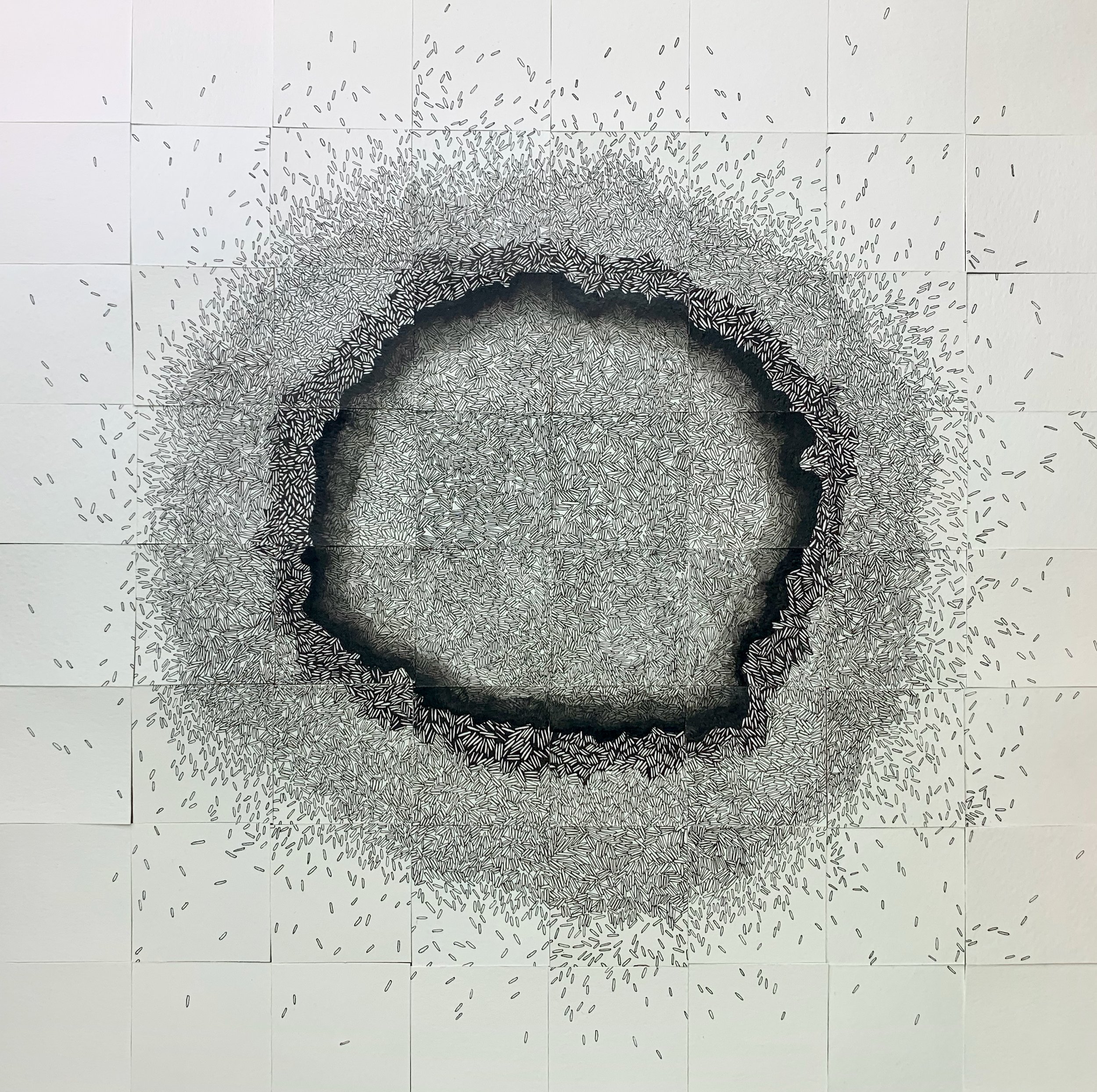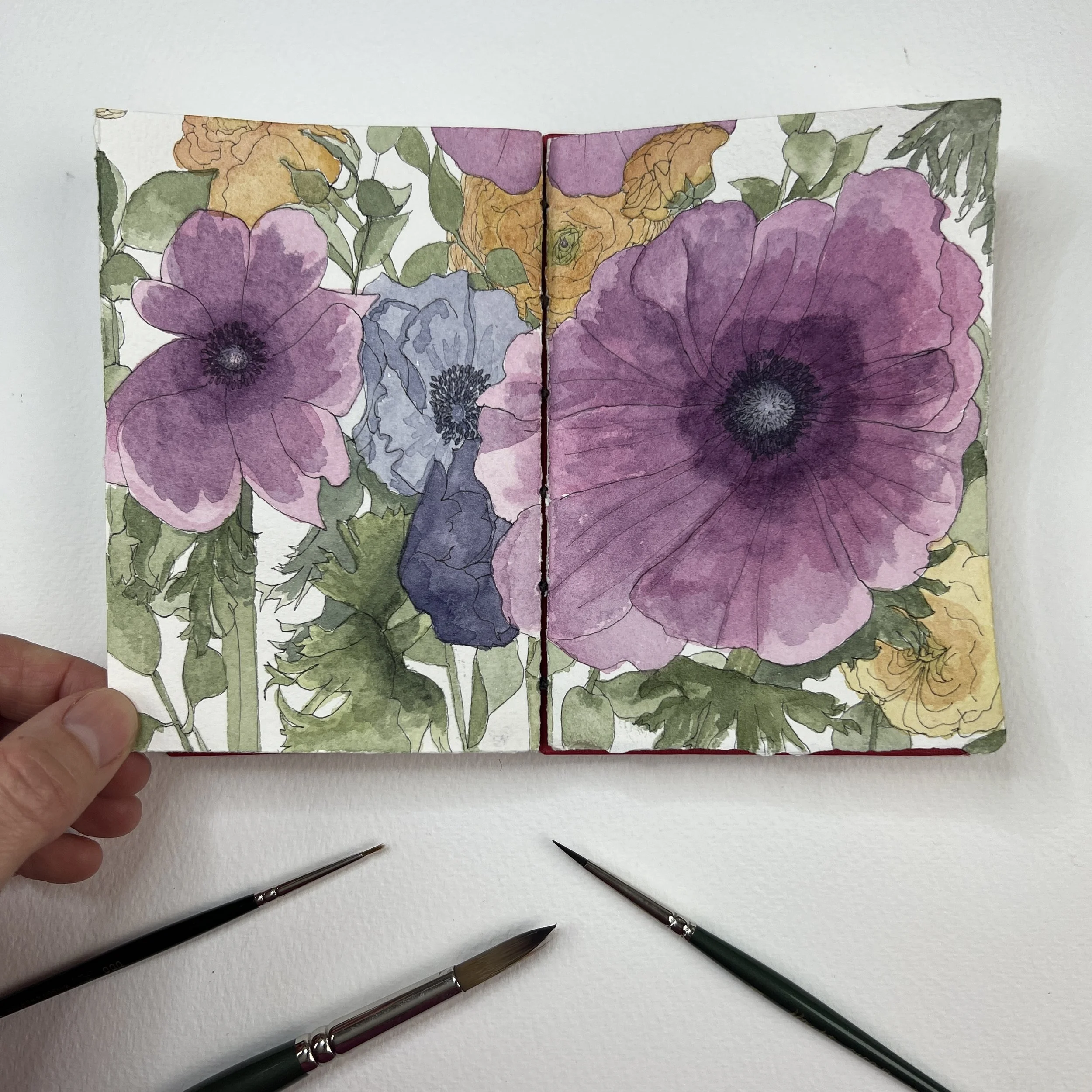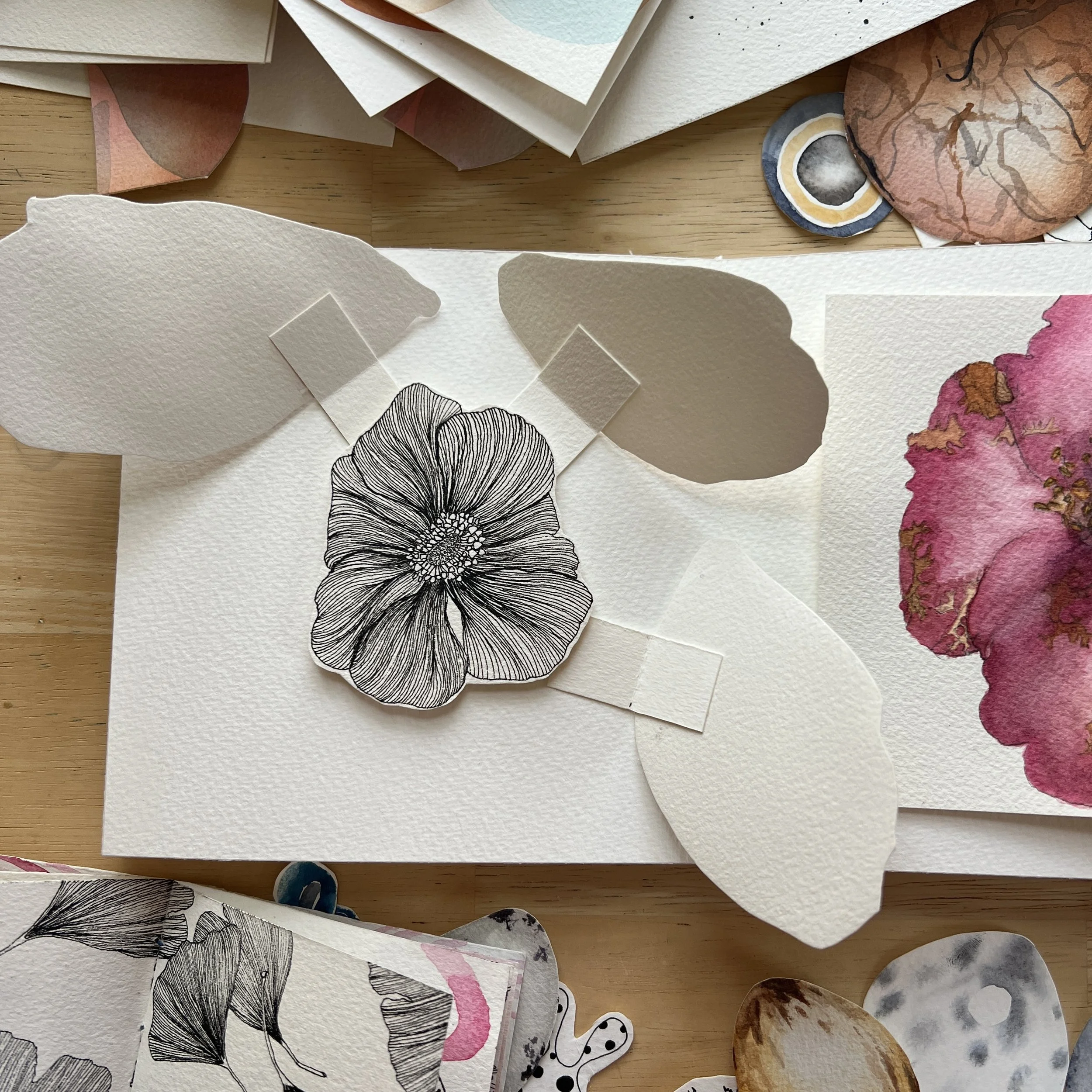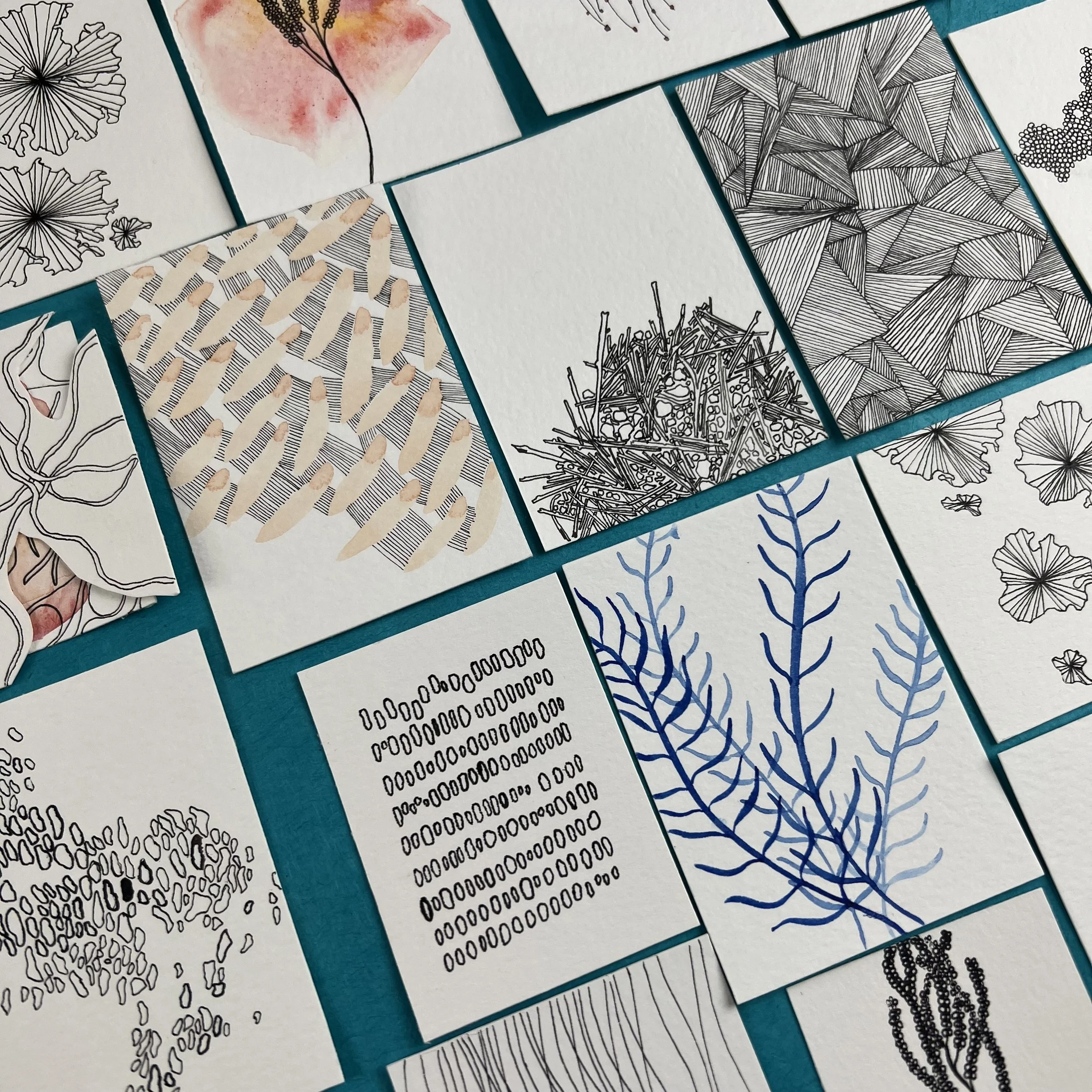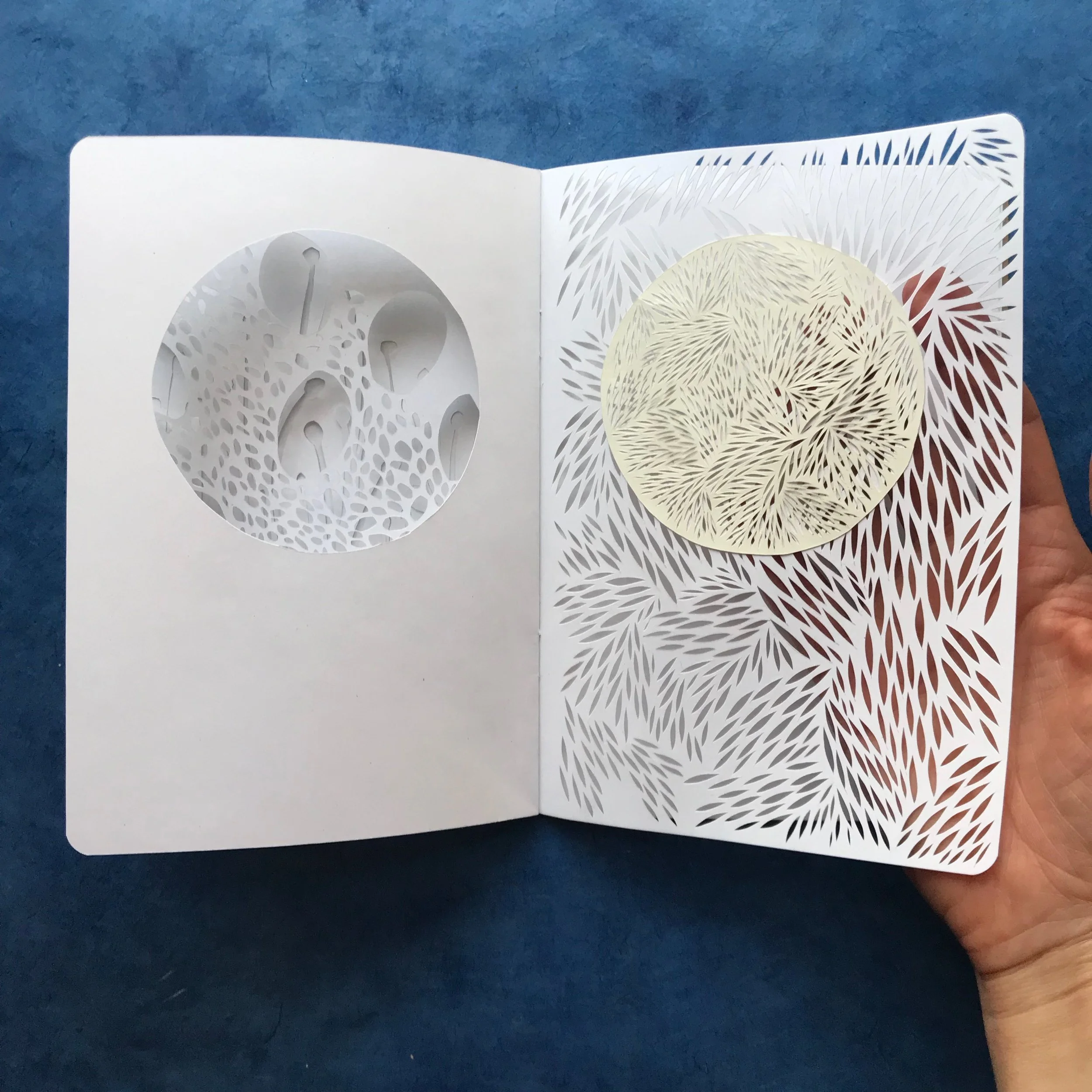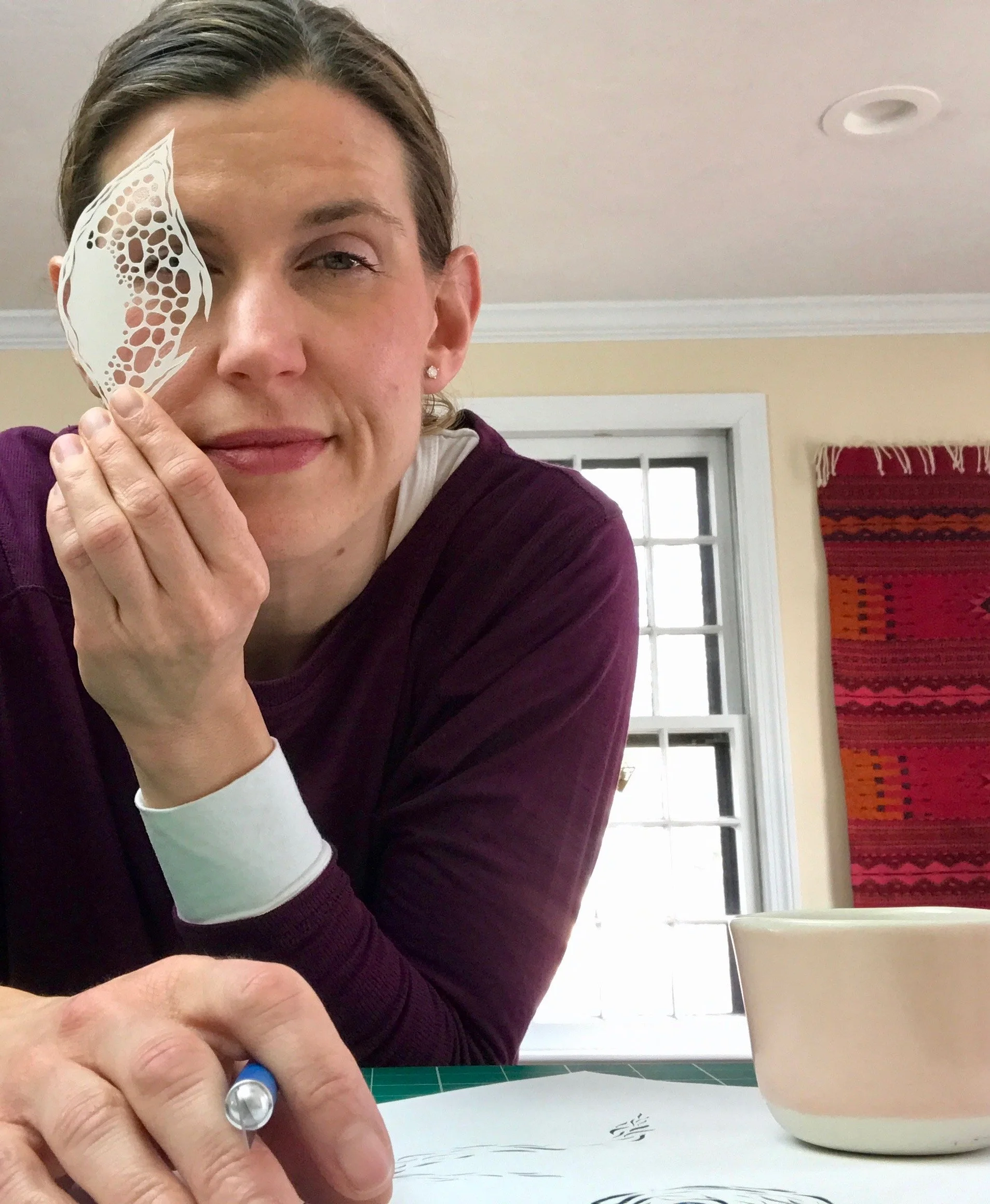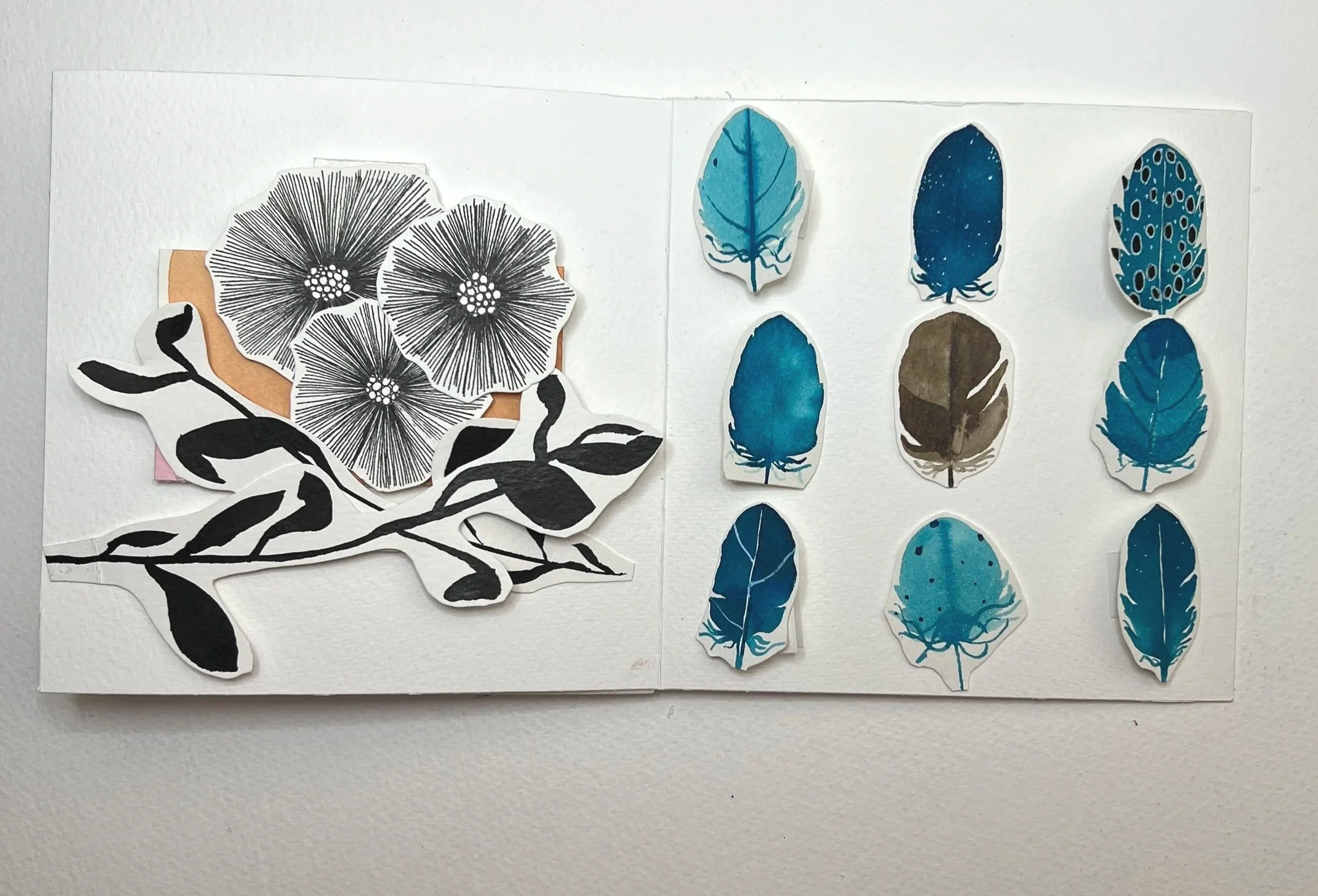Artist in Focus: Amy Maricle
Imperfection, wonder and the power of baby steps…
This week is an artist-to-artist conversation with American artist Amy Maricle. We swap answers to the same set of questions about our art practice, sharing what’s magical, what’s maddening and what our future self would like us to hear.
Amy’s interview is below and you can read my interview over on her website.
About Amy Maricle
Amy Maricle is an artist, art therapist and author who is fascinated by the connections between nature and art. In her classes in art journaling, painting, bookmaking, and paper cutting, she teaches students to slow down and co-create with nature, using a playful creative process to find more joy and meaning. She is the author of Draw Yourself Calm: Draw Slow, Stress Less (North Light, 2022) and her art and writing have been featured in The New York Times.com, The Times London, and The Washington Post.com among others. You can check out her website here.
If you’d like to experiment with Amy’s nature-based drawing techniques, she is offering my readers an invitation to a free slow drawing workshop.
What is magical about your art practice?
Working in layers and in series is magical for me. It frees me up to let the work evolve without pressure. I almost always make numerous versions of the same thing, ‘what if…’ questions fueling endless iterations, and helping me to find my best work without the pressure of perfectionism.
On a recent trip to Greece, I noticed the dangling, parasol-like bloom of the aloe plant. Using small pieces of watercolor paper, I joyfully drew and painted many versions of it. I now have a 3 x 3 inch pop-up book where large blooms lift off the page and obscure little treasures, and the tiniest little aloe bloom hides beneath green misty doors. There’s a sense of intimacy and curiosity with pop-up books and small-scale art. I try to recapture the wonder we felt in childhood, but with an adult’s sensibilities.
Nature-based art feels magical to me. I ask questions like: How can I extrapolate a pattern from the whorl in my dog’s fur, or from the foam swirling on the river? When I reduce these patterns to their most basic elements, are they the same? What else in nature fits this structure? These questions fascinate me.
What is boring and frustrating about your art practice?
I hate measuring. In order to make journals and sketchbooks, you need to measure, and since I do it seasonally, not consistently, I don’t get into a rhythm with it. Each time I return to journal making, there is inevitably at least one mistake that I have to correct, and that is indeed boring and frustrating at times. With book making, I’ve had to learn the value of undoing and redoing stitches on a coptic bound journal, or re-cutting a set of accordion fold pages that land short, askew, or with a cut that went wrong. It’s worth it to make it right, because the journal is the foundation upon which my drawings, paintings, and paper-cuts sit, so I want to honor them.
Several years ago, I wouldn’t have had patience for this. I would have said, “Aw, it’s good enough,” but felt annoyed and discouraged. For me with art, there’s a funny balance between embracing imperfection to keep momentum and spontaneity, but also bringing my analytic mind to improve the work. It’s a dance that I enjoy and teach my students too.
Making my own journals gives me a feeling of self-sufficiency, and creative power, moreso because it doesn’t come easy to me. The patience for painstaking tasks has only come to me after learning to practice slow art.
What does your inner voice say on a good day?
My inner critic is really loud in some other areas of my life, but thankfully, with age this self-doubt has softened. I’m not sure what my inner voice has to say about my art. With art, occasionally of course I feel on stage, or worry I won’t measure up in some way. But mostly I’ve put myself in a position to be in my own lane, my own line of inquiry where I get to investigate what interests me artistically and follow it as far as time and energy allow. I guess I put blinders on to some degree, and shield my work from people who I know don’t care for it, so that the inner critic stays calm and unworried. I also think I have the advantage of positive reinforcement from my students. It’s encouraging when so many people want to learn from you. It makes you feel that you must be doing something right. I try to practice the dance between playful art and carefully crafted art. So it’s a blend of practicing and learning skills, and letting the ideas run wild and take me in new directions. So I guess the voice is mostly just curious and excited. She says, “Hey, what if we did this? Ooh, wouldn’t that be cool? What if we did that? That would be interesting too!”
What does your inner voice say on a bad day?
If I think about the few times I can recall a negative inner voice with my art - I remember once on a retreat with a lovely group of women - one of the less experienced students made a critical comment while I was demonstrating blind contour drawing. I had just finished saying that you can let things be loose and not the best to start, and she said something about how it was indeed not the best. 😂 Naturally, since I was demonstrating to a class, I felt a bit embarrassed and for a moment I questioned whether my art wasn’t good enough. But I also immediately recognized that this was the voice of a scared inner critic. She was letting me know she needed permission to screw up too.
When I was young I loved singing and theatre. My favorite director had invited me to perform as the only high school student with his troupe of college actors. When I arrived to perform my monologue for the other students for the first time, he smartly realized that I might feel pressure to be good. The invitation he gave me was a powerful one that I never forgot. He said, “I want you to screw up right now as much as possible.” I try to live out that advice of working out the kinks, working towards my best, but giving myself space to figure it out imperfectly.
What’s a small thing that delights you?
There are so many small things that bring me joy: Writing and scribbling in a big journal and the big ideas that arrive there. The sound of paper. A good fountain pen. Playing with hand lettering. Painting a simple, beautiful mark again and again. Looking long and deeply at plants, mosses, and tide pools. The way nature’s patterns repeat across species, down to the cell level and into the stars. Carrying a small journal and a pen so I can capture inspiration and draw any time. The way watercolor pigment moves on wet cotton paper.
What’s a big thing that scares you?
When my body doesn’t want to cooperate with my plans due to aches and pains I get scared. I love to go run, bike, hike, and lift. I once heard someone say, “Our bodies are incredible machines - it’s like we all have a lamborghini sitting in the garage. I want to take it out for a spin and see what it can do.” I love that.
What would your 12 year-old-self have to say about the way you are living your life?
I felt compelled to create a dialogue between me and my younger self::
Young Amy: Whoa! You are an artist? How do you have patience to do all those tiny, teeny drawings? They must take forever! I would hate that. How did you get to enjoy that?
Amy Now: I know, it’s crazy right? Who would have thought I’d learn the patience to do something so meticulous? Part of the secret is that I don’t plan it out. Just like when you draw mandalas, or make patterns on your sneakers with puffy paint, I let it evolve naturally, making a mark here and a mark there. With tiny marks, you build up patience over time, especially by drawing and painting slowly. Now I have the patience to do things I couldn’t before, like sew, or push myself to make my watercolor paintings look the way I want. It’s all about doing things in baby steps. That’s how you’ll do it too.
Young Amy: Your art is so cool, I mean my art is so cool! Ha! So, you own your own business? Do you have to deal with numbers and things? I would hate that.
Amy Now: That definitely scared me at first. But just like in the Delaware River on that tubing trip when you had to dig your feet into the riverbed as the current threatened to carry you off, I found some tools and people to support me, and I learned I’m capable of much more than I thought. Being a business owner is an evolving process. I’m learning all the time, and I even enjoy parts of it tremendously. Serving others is an amazing gift, and I know how much that matters to you, you’ve got this.
What would your 85 year-old-self have to say about the way you are living your life?
I’m surprised, but I really don’t know how to answer this one. I think she might say:
Make sure you make enough time for slow, deep art, and writing.
Put that stupid phone down.
Do one thing at a time.
Make the art.
Keep kicking ass.
If you’d like to experiment with Amy’s nature-based drawings, she is offering my readers an invitation to a free slow drawing workshop.




